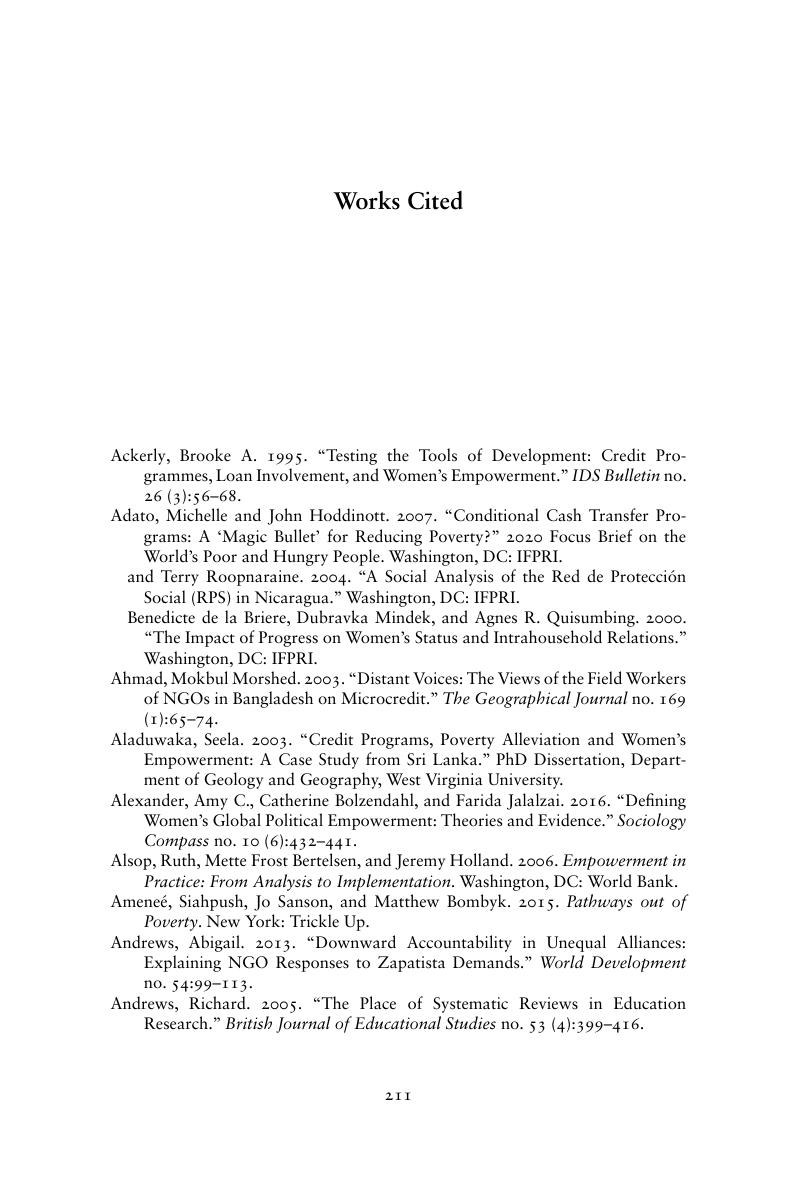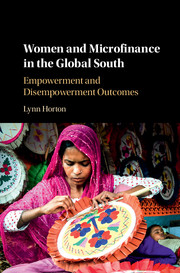Book contents
- Women and Microfinance in the Global South
- Women and Microfinance in the Global South
- Copyright page
- Contents
- Figures
- Tables
- Preface
- Acknowledgments
- Abbreviations
- 1 The Microfinance Revolution and Market Pathways to Empowerment
- 2 Gendering and Transforming Microfinance
- 3 Exploring Women's Empowerment through Meta-Synthesis
- 4 Putting Microfinance into Practice
- 5 Means to an End? Microfinance NGOs Target Women
- 6 Economic Outcomes of Microfinance
- 7 Women's Individual and Household Empowerment
- 8 Inside Microfinance Groups
- 9 Women's Collective Actions and Resistance
- 10 Synthesizing Case Findings
- 11 Conclusion: Microfinance and Beyond
- Appendix
- Works Cited
- Index
- References
Works Cited
Published online by Cambridge University Press: 08 December 2017
- Women and Microfinance in the Global South
- Women and Microfinance in the Global South
- Copyright page
- Contents
- Figures
- Tables
- Preface
- Acknowledgments
- Abbreviations
- 1 The Microfinance Revolution and Market Pathways to Empowerment
- 2 Gendering and Transforming Microfinance
- 3 Exploring Women's Empowerment through Meta-Synthesis
- 4 Putting Microfinance into Practice
- 5 Means to an End? Microfinance NGOs Target Women
- 6 Economic Outcomes of Microfinance
- 7 Women's Individual and Household Empowerment
- 8 Inside Microfinance Groups
- 9 Women's Collective Actions and Resistance
- 10 Synthesizing Case Findings
- 11 Conclusion: Microfinance and Beyond
- Appendix
- Works Cited
- Index
- References
Summary

- Type
- Chapter
- Information
- Women and Microfinance in the Global SouthEmpowerment and Disempowerment Outcomes, pp. 211 - 232Publisher: Cambridge University PressPrint publication year: 2017



